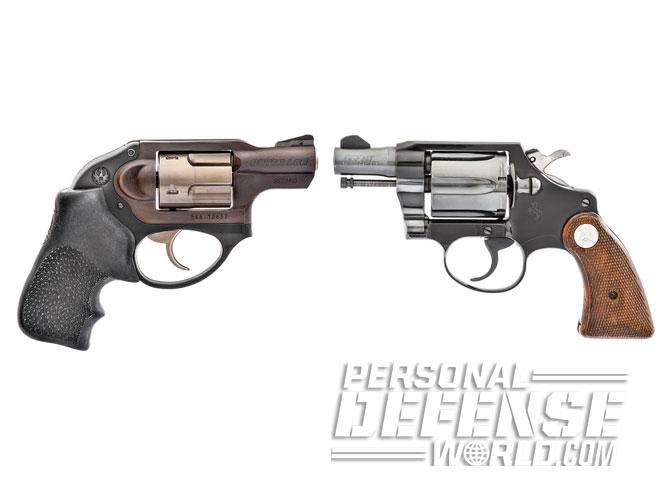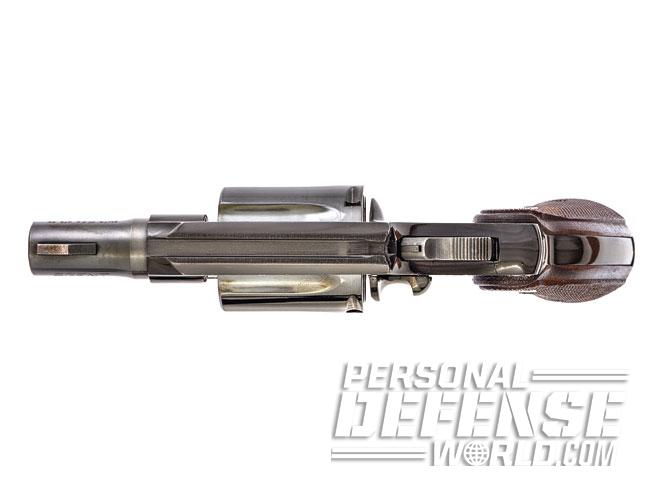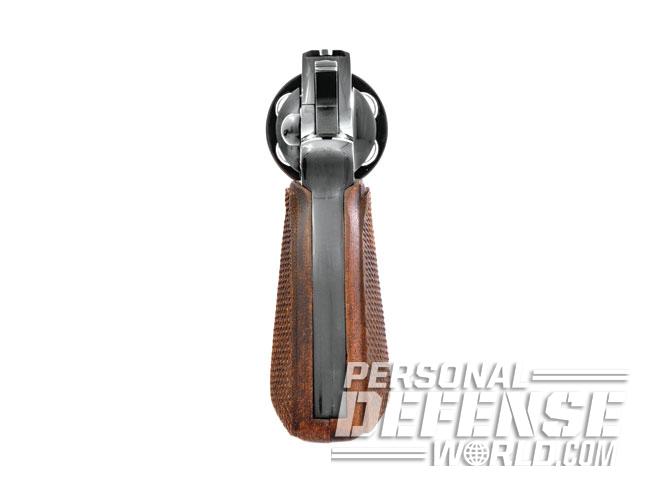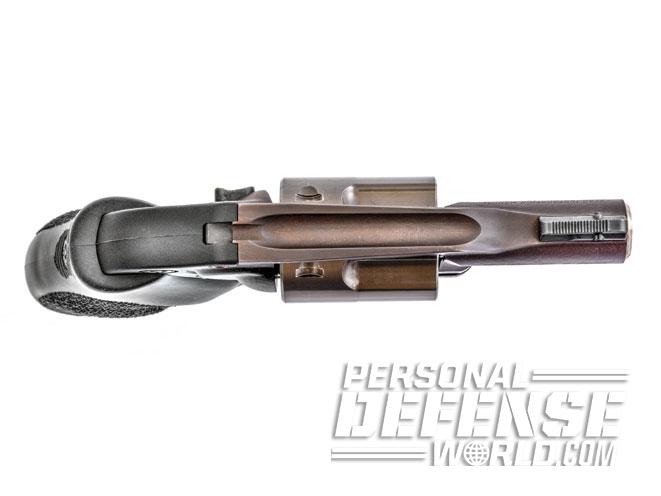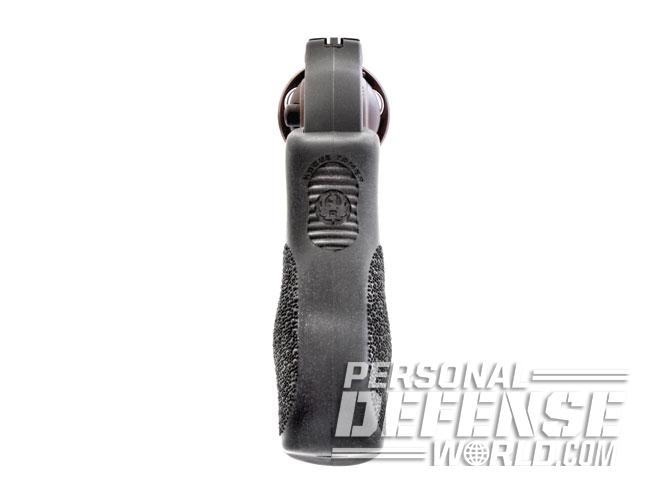When one chose to carry a small, self-defense pistol back in the 1950s, the variety of “top of the line” handguns gave you two excellent .38-caliber options. The first was the Colt Detective Special, introduced in 1927 (also later the c.1934 Banker’s Special, the very sharp looking 1950s Cobra, followed by the smaller-gripped c.1960s Colt Agent). The second choice in concealed-carry wheelguns was the Smith & Wesson Chief’s Special and Chief’s Special Airweight (later the Model 36 and Model 37), the Bodyguard Airweight (later the Model 38), and the very slick hammerless Centennial and Centennial Airweights (later the Model 40 and Model 42). The S&Ws, however, which all came about in the 1950s, were built on the S&W J-Frame and were five-shot repeaters. The much older Colts held a one-round advantage with their sixgun cylinders.
Fast-forward to the 21st century and snub-nose revolvers are still around, which is an impressive fact in itself. The Colts, however, are long gone and have become collectible, while S&W has continued to advance the technology and produce a full line of compact revolvers. But S&W is only one among a vast field of small-frame .38 Specials available today, with the technology leader being the Ruger LCR.
With this in mind, let’s see how this new-tech, polymer-framed five-shooter stacks up against old-school, all-metal standard-bearers like Colt’s Agent, the smallest of the famed Detective Special-based wheelguns.
Advertisement — Continue Reading Below
Colt Agent
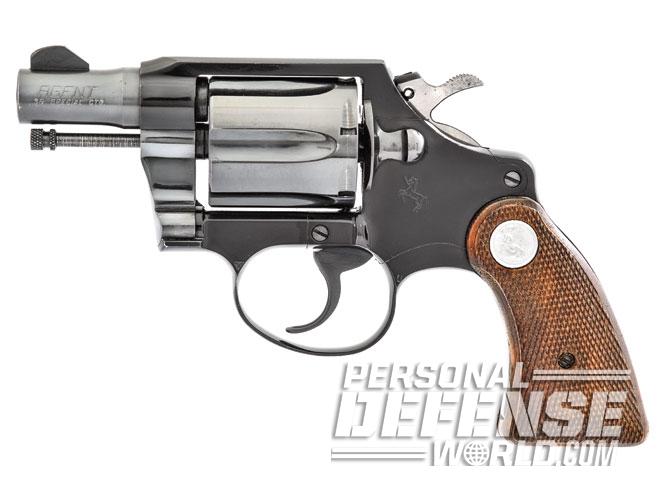
Back in 1926, Colt offered a 2-inch-barreled version of the Police Positive called the Special. Two years later it would become a separate model, the Detective Special, a handgun that remained in production in its pre-war form from 1927 to 1946, and in slightly modified post-war second, third and fourth issues from 1947 to 1995.
RELATED STORY: Concealed Carry Comparison – Ruger LCP Custom vs. GLOCK 42
Advertisement — Continue Reading Below
The Detective Special originally had a square-butt grip, but in 1933 it was rounded off. The Agent was essentially a Detective Special built for more covert carry with a shorter, 2.5-inch, finely checkered, square-butt, walnut grip that barely allowed enough depth for the second and third fingers to grasp it. A high-cut triggerguard helped but punished the shooter’s middle finger unless the Agent was properly held. The shorter grip made the gun easier to conceal but harder to control than the standard Detective Special or Cobra models. It was accurate enough at close range with then-current .38 Special cartridges but not exactly pleasant on the shooting range after about 50 rounds. The Agent weighed a mere 14 ounces and, like the rest of the line, carried six rounds over a comparable Smith & Wesson revolver’s five. The original version was manufactured from 1962 to 1972.
In overall length, the pocket-friendly Colt six-shooter measured 6.5 inches, 4.25 inches in height and had a cylinder 1.25 inches in width. Being a traditional double-action/single-action revolver, the Agent was a good deal more accurate with the hammer cocked, but never as easy to handle as the Detective Special.
Ruger LCR
Advertisement — Continue Reading Below
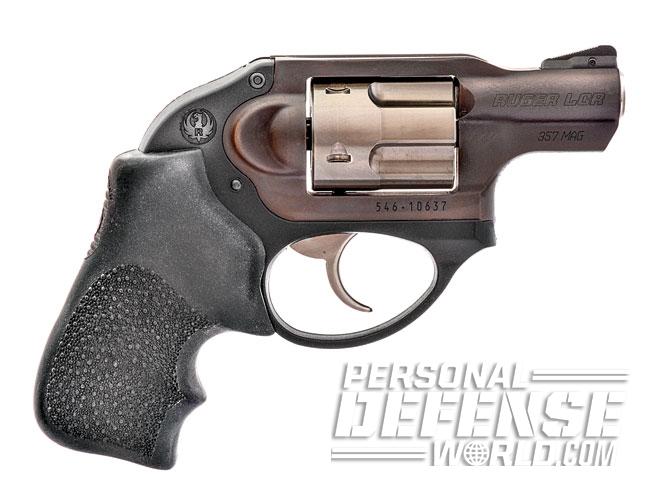
At the point in time when Sturm, Ruger & Co. embarked on developing the LCR, the company took everything, aside from the dynamics of a revolver’s operation, and tossed it out the window. An LCR is comprised of three major components—a blackened stainless steel cylinder frame and barrel assembly (with the barrel shroud as an integral part of the frame); a polymer fire control housing containing the trigger and triggerguard, the hammer, the sear and the mainspring; and the stainless steel cylinder/crane sub-assembly. Large Hogue Tamer rubber grips are secured by a single, integrated grip peg and held with a long screw through the base.
The contoured rubber grips provide plenty of grasping surface and the triggerguard design places that once vulnerable knuckle of the middle finger within the protective area of the grip. The fully shrouded hammer also streamlines the Ruger for trouser or jacket pocket carry with no edges to catch on fabric. (There were enough diehards demanding an exposed hammer, however, that Ruger began offering the LCRx).
RELATED STORY: Concealed Carry Comparison – Boberg XR45-S vs Springfield XD Mod.2
Advertisement — Continue Reading Below
For a small, lightweight revolver the LCR is well balanced with a long but very smooth trigger pull that averages 10.75 pounds. The deeply curved, skeletonized trigger requires nearly a full inch of pull to rotate the cylinder, cock the internal hammer and discharge the firearm, but the mechanism is designed to generate less friction than traditional double-action-only triggers, thereby mitigating some of the stacking generally experienced in firing double action.
The gun is equipped with a standard notched rear sight channel and a ramped front sight. (Editor’s Note: The author’s LCR used for Tale Of The Tape testing is an earlier version. Current LCRs have front sights containing a white insert for enhanced sighting.) The LCR in .38 Special +P weighs just 13.5 ounces. The revolver stands taller than the Agent by a quarter of an inch, has the same overall length but with a slightly shorter barrel length of 1.875 inches and comes in just a tad wider at 1.3 inches. (ruger.com)
Range Report
Advertisement — Continue Reading Below
Both guns were fired double action only at a distance of 7 yards using Winchester .38 Special 130-grain FMJ target loads. The Winchester rounds clocked 760 fps through the Colt and 768 fps from the Ruger. The Agent has a smoother double-action trigger pull than the LCR by 0.75 ounces, which is subtle but noticeable. As to accuracy, both have comparable sighting capabilities with the Ruger gaining an edge with better balance and recoil control. The best five rounds from the Colt Agent measured 2.75 inches, with a best three at 0.75 inches. The LCR also grouped five at 2.75 inches, with a best three measuring 1 inch. So just about even.
RELATED STORY: Revolver Vs. Auto – Which Model Fits Your Concealed Carry Needs?
It all comes down to is weight versus ease of handling. The old Colt will always win out in capacity, but when everything else is considered, the technology behind the LCR makes it an easier revolver to handle and thus a better gun for today’s carry needs, even with one less round in the cylinder.
Advertisement — Continue Reading Below
